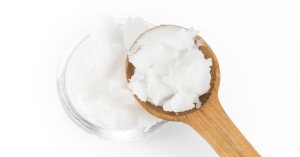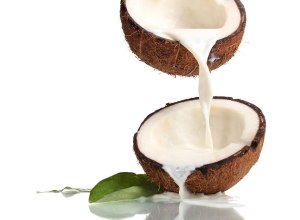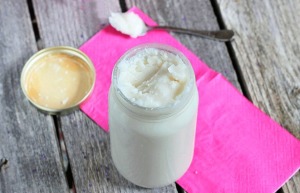With the myths and stigma around saturated fat slowly being lifted from society, the coconut business is booming. If you take a gander around the grocery store aisles, you’ll notice new coconut-based products popping up on the shelves far beyond the baking aisle.
To give you an idea of the general nutrition of a coconut, most of the energy contained in the flesh is saturated fat. Per 100g of coconut, 90% of its fat content is saturated.
Now, let’s rewind. Before sugar became the villain and fat was given the clear, we were taught to believe that this subdivision of fat was the cause of everything from heart disease to obesity. It’s believed to raise LDL (bad) cholesterol leading to a myriad of issues that stem from it. In essence, you could attribute your ailing health to all that coconut oil you were eating… Wait, what? Nobody was even eating coconut oil in the United States until the past couple years. Nowadays, it’s considered a “superfood.” Saturated fat is also found in red meats, eggs, butter, nuts and seeds, and full-fat dairy all of which can be included in a healthy, balanced diet. So, what’s changed?
With anything, moderation is important, and saturated fat is no exception. The thing about eating fat and having a diet rich in coconut products is that your food will be more naturally satiating. All fats with the exclusion of trans fat help you to feel satiated after each meal which in turn can lead to weight loss. Moreover, saturated fat can help to address hormone imbalance, support immunity, and promote good liver health.
Now that we’ve cleared up the basics, let’s cover ground on the easiest (and most delicious) ways to include more healthy fats in the diet: all coconut everything! From cooking to baking to dressing your salad, this wonderful superfruit has something to offer you at every meal.
1. Coconut Oil
All right, you’ve seen the hype. You can use this to cook with, to brush your teeth with, to moisturize with, or you can throw a scoop in your coffee in the morning. Basically, it’s a jarred up miracle sold in every grocery store across America. Let’s focus on nutrition, though. First of all, this oil is stable at high heat unlike something like olive oil which means you won’t damage its nutrient-complex while cooking at higher temperatures. Regular consumption can positively impact blood sugar, insulin, HDL (good) cholesterol, vitamin absorption, and the body’s resistance to viruses. Seriously, there’s nothing it can’t do. Even better, it’s easy to replace less healthy oils that you use daily like vegetable oil with coconut oil instead. Make the switch today!
2. Coconut Milk
Maybe on your journey to eat healthier, you’ve cut out dairy. While it’s hard to say goodbye, we do it in hopes of feeling better. Many people are lactose-intolerant after all. One of the hardest dairy indulgences to eliminate for many is creamer in their coffee. Most nut milks simply don’t take on the texture or flavor that heavy cream offers to a cup of joe. That’s where coconut milk comes in. Dairy milk is often attributed to good bone health due to its calcium content, but coconut milk boasts a healthy dose of phosphorous which is also good for building strong bones. Lastly, it’s packed with magnesium which can promote relaxation and fiber to help you feel full. You can use it in smoothies, in curry dishes, or make ice cream with it. Once again, coconut proves its versatility.
3. Coconut Butter
Coconut butter, also known as coconut manna, is one of the easiest coconut creations you can make at home! It’s sold in the stores now right next to the peanut butter if you want to skip the hard part. All you need is shredded coconut and a food processor. This spread is a great alternative to a nut-based butter, especially if you have allergies or sensitivities to things like peanuts, almonds, and cashews. It looks a little like the oil when it’s solid, but this product is comprised of the actual meat – not just the extractions. It’s jam-packed with healthy fats and helps to boost metabolism. Spread it on fruits, toast, or just eat a spoonful out of the jar as a snack to really curb your cravings for something sweet.
4. Coconut Sugar
All right, so, coconut sugar is not a source of saturated fat either. It’s a carbohydrate source which is quite the opposite. Still, this product can be incredibly useful in the kitchen, especially if you’ve got a sweet tooth! As a rule of thumb, you can replace any recipe that calls for white, refined sugar with an equal amount of coconut sugar instead. The nutrition of the two is comparable regarding their macronutrient content, but the benefits of coconut sugar make it the better choice. It’s filled with trace minerals, amino acids, and B-vitamins, and antioxidants. Yep, and you can bake cookies with this stuff! It also has a lower glycemic index at 35 on the scale. To put this into perspective, table sugar sits around 60! This means you receive less of a blood sugar spike (and drop!) after consumption which will help you maintain energy levels and manage hunger.
5. Coconut Flour
While gluten-free continues to be all the rage, coconut flour is a more commonly called for ingredient in recipes. While it doesn’t quite act the way that normal wheat flour would – especially for baking – it’s an incredibly useful tool. It’s good for absorbing moisture and cutting other gluten-free flours with. Its fiber content is almost double that of wheat bran which can easily help you to reach your daily quota. Oh, and in addition to its healthy fats, it’s packed with protein! Per 100 grams, this flour has nearly 20 grams of protein! To put it into perspective, that’s the equivalent of three whole eggs! Consider making the transition if you like to bake, or add it to sauces and gravies to make them thicker.





